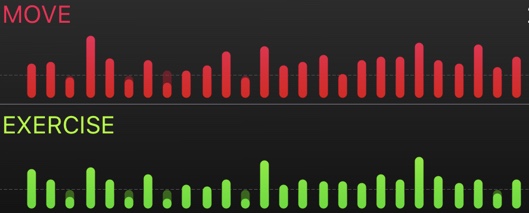If workouts are going to be a regular part of our life
and we want them to keep “working”, we need to strategically cycle between more and less difficult workouts.
Periodization
is a word that’s usually only heard around athletes in training, but it’s an important concept for everyone who exercises regularly. Periodization involves cycling the intensity and the volume of your workouts. It means mixing up your routine. It keeps things interesting for sure, but most importantly, it keeps you from getting injured and sick from over training. It also helps prevent the plateaus!
(Intensity means exertion, or physical difficulty. For volume, think time spent doing cardio or number of reps for lifting.)
But periodization isn’t simply changing up the exercises;
there’s some order and progression to it. In strength training, for example, a periodization plan could move you from using lower weight and doing a higher number of repetitions to higher weights and a lower number of repetitions within a certain amount of time. In cardiovascular training like running for example, periodization includes flat and short runs, gradually increasing the distance and adding hills and intervals in an organized manner1.
You can cycle through high and low intensities
and high and low volume every few months or every few weeks2. I recommend cycling within the week as well, where some days are high intensity and others are moderate3. This allows for optimal muscle recovery and rebuilding while maintaining good calorie burn.
If you consistently get dragged off your workout schedule
with work obligations or illness, or if you travel a lot and don’t exercise while on travel, when you get back you’ll ramp back up to where you left off. This is a cycle, per se, of exercise and not exercising. It’s not one that I recommend, and it won’t move you forward very well, but it is a cycle.
If you’re consistent with your routine
you’ll see more results. And yet, your challenge will be balancing your workouts in a way that keeps your body improving and recovering optimally. The variation will also help you avoid putting too much stress on your body – which can lead to injury, lack of sleep, moodiness and even a compromised immune system4,5.
Everyone’s body and life is different
so I won’t put a workout cycle here that’s a one-size-fits-all. I take into account a client’s current fitness levels, goals and life schedules when I plan these programs. But, I can show you an example. I cycle through low, medium, and high exercise intensities with strength training through the week and throughout the year. I also change my cardio focus during the seasons. Since my Apple Watch has been keeping track of my workouts, I can show you a rough detail of what my last few weeks and months have been looking like.
(As for the stand time for the day I took the picture, I don’t always wear my watch all day!)
Periodization
is a subject we’re talking about and working on in the Mind Body Best Membership this month. If you’ve worked with me as a client or in one of my online courses (next course coming soon), you’re eligible to join the membership. You can always set up a one-on-one appointment with me to work out your own, personal periodization plan. Otherwise, follow this blog for more information about how to stay healthy and fit all year!
Questions or comments?
Put ’em in the comments section below!
References
- ACE Fit Facts / Exercise Programs / Periodized Training and Why It Is Important https://www.acefitness.org/acefit/fitness-fact-article/2624/periodized-training-and-why-it-is/
- Beltz, N. & Kravitz, L. (2014). Resistance Training Periodization in Women: New Insight for Training Design, IDEA Fitness Journal, 3 (1), 18-21.
- Frankel, C.C. & Kravitz, L. (2000). Periodization: Latest Studies and Practical Applications. IDEA Personal Trainer, 11(1), 15-16 https://www.unm.edu/~lkravitz/Article%20folder/periodization.html
- Jonathan Ross, (2015) 7 Signs You May Be OverTraining. https://www.acefitness.org/blog/5310/7-signs-you-may-be-overtraining
- ACE Fit Life Overtraining (2016) https://www.acefitness.org/acefit/healthy-living-article/60/6119/are-you-overtraining-how-to-know-and-what-to-do/



